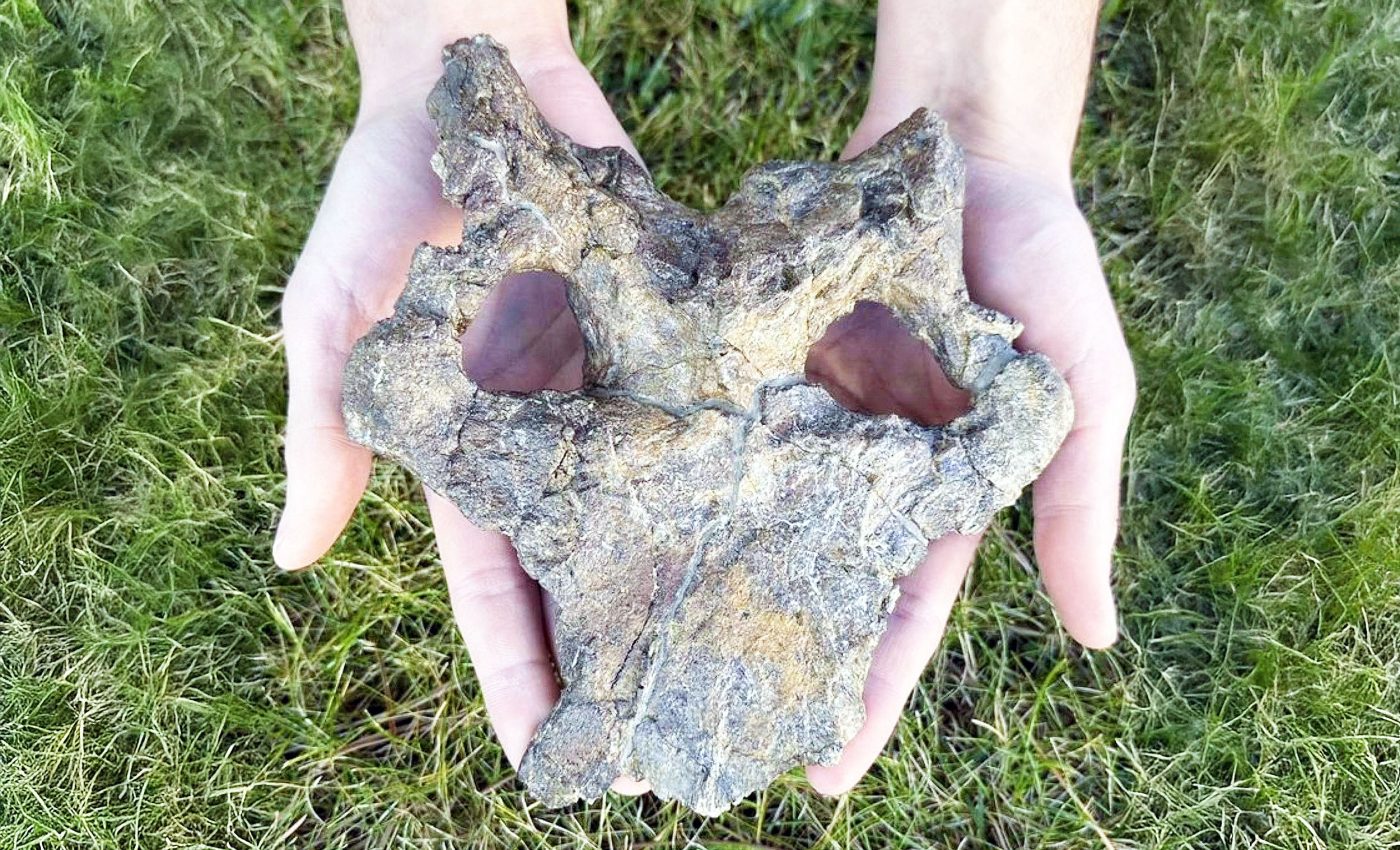
Most-complete Stegosaur skull ever found forces rewrite of dinosaur history
A dusty hillside near the village of Riodeva in Spain’s Teruel province has yielded a fossil prize that is turning heads in dinosaur research circles. It is the best-preserved stegosaur skull ever found in Europe.
Discovered at the Están de Colón quarry, the partial cranium belongs to Dacentrurus armatus. The species was first named 150 years ago, but was previously known mostly from scattered bones and armor plates.
The new specimen, paired with hundreds of additional skeletal elements from the same site, is allowing paleontologists to redraw the evolutionary map of stegosaurs worldwide.
Full and fragile fossil find
Finding any dinosaur skull intact is rare; the thin bones tend to disintegrate long before they can fossilize.
Stegosaurs pose an extra challenge because their small heads often separate from the body during burial. Researchers excavated the Riodeva skull from the Villar del Arzobispo Formation and dated it to about 150 million years ago. It preserves crucial parts of the snout, upper jaw, and braincase.
Sergio Sánchez Fenollosa is the lead author of the study and a paleontologist at the Fundación Conjunto Paleontológico de Teruel-Dinópolis.
“The detailed study of this exceptional fossil has allowed us to reveal previously unknown aspects of the anatomy of Dacentrurus armatus, the quintessential European stegosaur,” he said.
“Dinosaurian skulls are rarely preserved due to the extreme fragility of their bones. This discovery is key to understanding how stegosaurian skulls evolved.”
The skull was not alone. Excavations at Están de Colón have produced more than 200 bones, representing at least two individuals – one a juvenile.
Such mixed-age material is “a particularly rare combination in this type of dinosaurs,” Sánchez Fenollosa noted. It offers researchers a snapshot of growth stages within the same species, something seldom available for plated dinosaurs.
Stegosaur skull redraws the family tree
Using new skull data, scientists analyzed 30 stegosaur species across 115 traits to map their evolutionary relationships. Their conclusions upend several longstanding assumptions.
Chief among them is the proposal of a brand-new clade, Neostegosauria. This group gathers moderate-to-large plated dinosaurs that roamed Africa and Europe in the Middle and Late Jurassic, North America in the Late Jurassic, and Asia into the Early Cretaceous.
By anchoring this group on well-preserved skull material rather than fragmentary limb bones or armor plates, the researchers argue they can more securely trace how certain hallmark features evolved.
These include traits like plated backs and spiked tails, which appeared in parallel lineages.
A dual gain for paleontology
The combination of a spectacular fossil and a sweeping evolutionary re-evaluation gives the study unusual weight.
“This dual achievement – both the study of an exceptional fossil and the proposal of a new evolutionary hypothesis – positions this research as a global reference in stegosaurian studies,” explained co-author Alberto Cobos, the managing director of Fundación Dinópolis.

Cobos added that the quarry still holds “numerous relevant fossils, including more postcranial elements from the same adult specimen and, notably, juvenile individuals.”
Each new find adds to the province’s growing reputation as Spain’s premier dinosaur hunting ground.
The power of one skull
Stegosaur skulls are small and fragile, yet packed with vital clues about the group’s evolutionary history. The braincase reveals sensory priorities; jaw shape hints at diet; teeth signal how a species processed vegetation.
With Riodeva’s specimen, scientists can test whether European stegosaurs had different feeding strategies from their better-known North American cousin. Early observations suggest a narrower beak and differently set cheek teeth, potentially indicating variation in plant choice between the two continents’ ecosystems.
The skull also shows attachment points for neck muscles that supported the animal’s iconic plates and spines.
Understanding these connections could illuminate how Dacentrurus displayed or defended itself – key questions in debates over whether plates were mainly for thermoregulation, intimidation, or species recognition.
Why this stegosaur skull is important
Teruel’s dinosaur riches stretch beyond stegosaurs. The same rock layers have delivered sauropod giants, ornithopods, and ancient crocodile relatives, painting a vivid picture of an Iberian ecosystem teeming with life at the close of the Jurassic.
By placing Dacentrurus firmly within that mosaic, the new study helps palaeontologists align European fossil sites with those in Portugal, Tanzania, and the American West.
Just as important, the discovery underscores the value of meticulous regional fieldwork. While high-profile sites in North America and East Africa have long dominated dinosaur lore, provinces like Teruel prove that groundbreaking specimens still lie in less famous outcrops.
“These discoveries continue to exponentially increase the paleontological heritage of the province of Teruel, making it one of the iconic regions for understanding the evolution of life on Earth,” Cobos said.
More fossils, more questions
The Riodeva team plans further CT scanning and digital reconstruction of the Stegosaur skull, which will allow 3-D printing and virtual sharing with researchers worldwide.
As new bones leave the rock, they will test the Neostegosauria hypothesis against additional data.
Meanwhile, museumgoers and dinosaur enthusiasts can look forward to seeing the restored skull on display at Dinópolis.
A century-and-a-half-old European dinosaur finally gets to show its face – and perhaps change the plated dinosaur story for good.
The study is published in the journal Vertebrate Zoology.
Image Credit: Fundación Conjunto Paleontológico de Teruel-Dinópolis
—–
Like what you read? Subscribe to our newsletter for engaging articles, exclusive content, and the latest updates.
Check us out on EarthSnap, a free app brought to you by Eric Ralls and Earth.com.
—–













